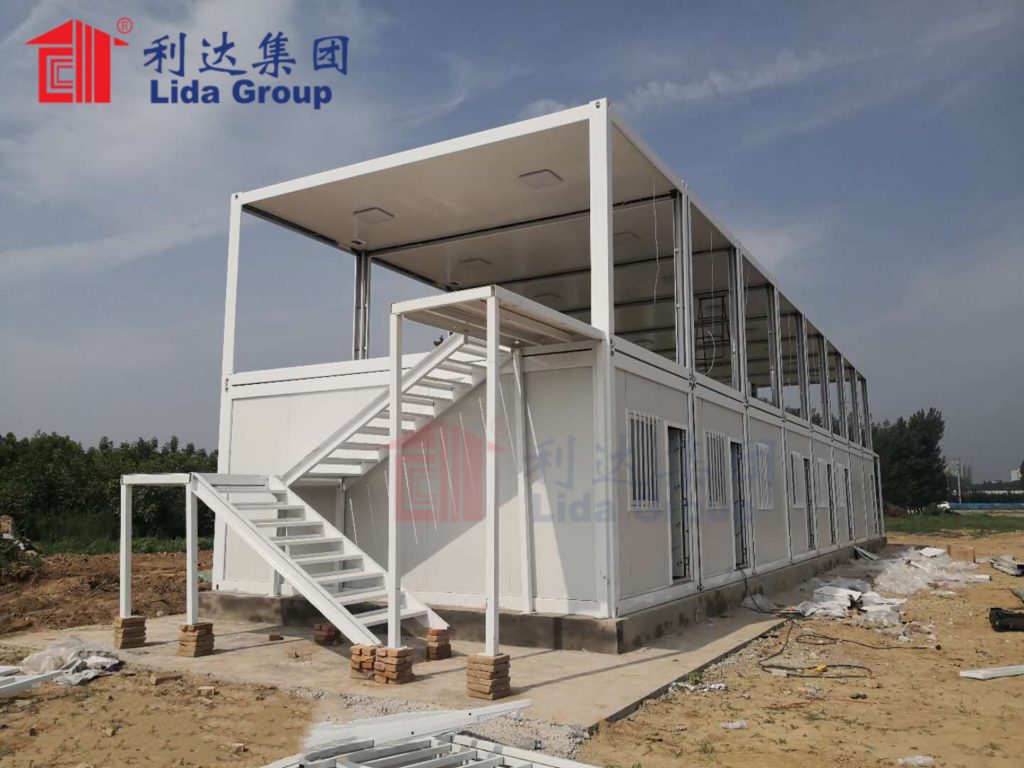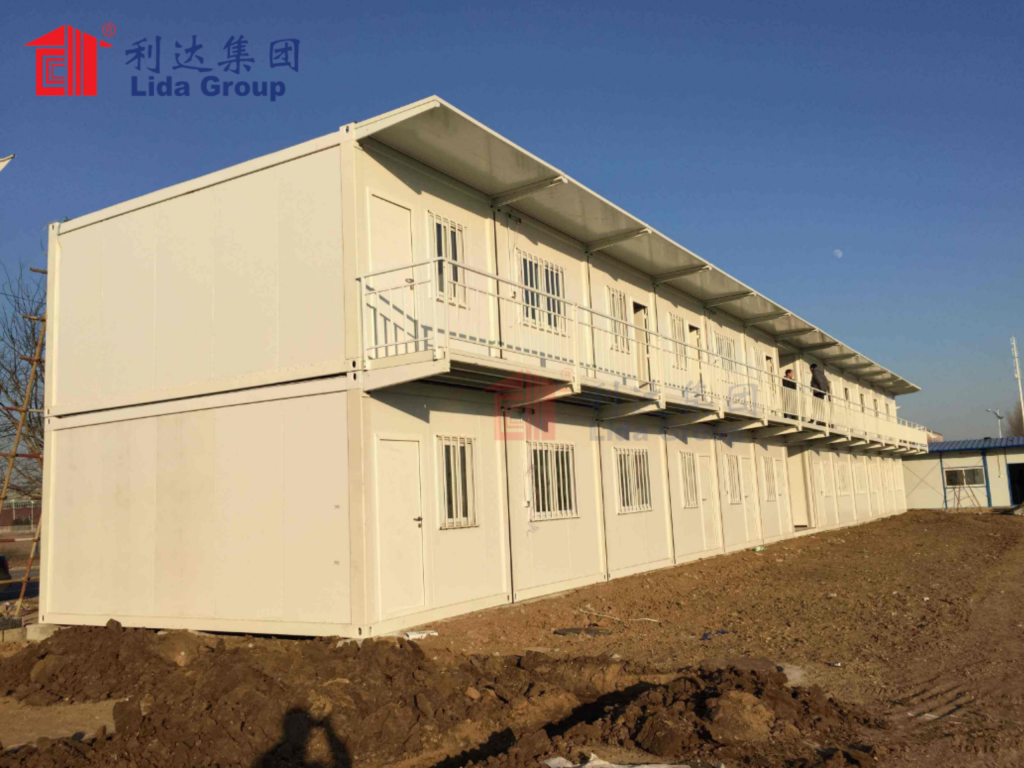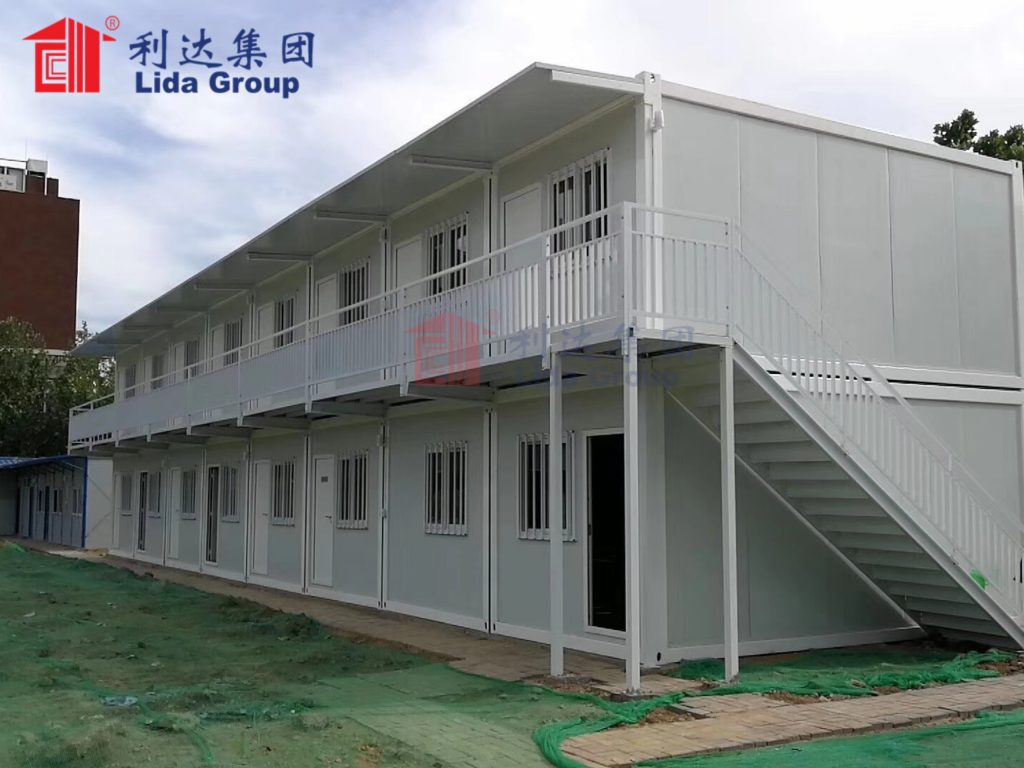Chinese modular construction firm Lida Group drew international attention at this year’s Shanghai World Expo with an eye-catching prototype apartment building constructed entirely from recycled steel shipping containers joined using the company’s patented connection systems. The showcase project aimed to demonstrate viable eco-friendly building practices promoting complete material circularity within off-site construction applications.
Visitors were impressed touring the full-scale demonstration unit housing all typical residential functions within its compact 80 square meter floorplan meticulously designed within the constraints of stacked 40-foot container dimensions. Beyond structural performance validations previously undergone, the bold recycling initiative represented Lida Group’s ongoing vision refining modular building toward net-zero environmental impacts.
“We aspire going beyond certified ‘green building’ to closing material loops entirely,” explained Lida Group CEO Mu at the project launch. “This prototype proves shipping containers – among the world’s most Traded resources – can find second lives as sustainable buildings when joined through our industrialized processes with meticulous circular designs.”

Salvaged from dockyards worldwide, each container underwent strict non-destructive testing to screen for defects before being disassembled through robotic cutting. Quality steel sheets were sorted for reuse as structural members maintaining full structural integrity, while lower grade scraps recycled as downcycled construction materials to minimize waste.
Interlocking connections between units featured staggered bolt patterns conducted loads multidirectionally while tolerating production variations. Floors constructed within containers linked adjacent modules compositely through tongue-and-groove sleeve connections. Curved ‘C-channel’ wall panels aided aerodynamic streamlining for light steel frames.
Fireproof intumescent coating lines welded seams, while rigid foam insulated envelope maintained indoor climate control passively. Skylights and triple-glazed windows maximized natural lighting. Rainwater harvesting and graywater recycling systems completed sustainable water management on-site. Furnishings utilized recycled plastic or rapidly renewable materials like cork or bamboo.

Construction relied exclusively on gravity and connections requiring no heavy lifting equipment, showcasing potential for rapid refugee or disaster shelter assembly worldwide. Prefabricated service risers for plumbing and wiring elevated efficiencies eliminating on-site trades without sacrificing lifespan or code compliance through strategic material selections.
A unique split-level layout stacked containers vertically yet maintained spatial contiguity through interlocking floor cassettes joined like building blocks. Upper floors featured private studios while common spaces extended outward – all methodically packed within standardized footprints optimized for component transportation, handling, and stackability on infill sites.
Modular replication promise volume housing addressing urgent shortages responsibly. By distributing prefabricated apartments flat-packed yet fully outfitted globally via containerships, construction waste shrinks further while densifying communities near jobs rather than sprawl consuming pristine land and escalating living costs.

The exhibit drew praise from sustainability experts. “Proving buildings can harness ubiquitous recycled materials through innovative connections empowers responsible cradle-to-cradle design at scale,” noted architect Zheng representing conservation nonprofit EcoArk. “With refining, the concept could lead shipping’s annual 6 million TEU containers to second useful lives avoiding landfills.”
Government delegates echoed passions for accelerating modular adoption to meet Paris Climate accords through regenerative building technologies. Streamlining policy pathways recognizes pre-approved container designs, promoting manufacturing zones near ports handling global container freight. Investments help transition traditional recycling into modular production supporting equitable green economies.
Strategic partnerships formed committing R&D leveraging the prototype. Belgian startup Volta Structures adapts Lida’s closed-form steel panels for tall mass timber construction. Canadian micro-manufacturer Embodied develops customizable interior space division systems integrating furniture and structure seamlessly. Hong Kong University fabricates test prototypes incorporating phase change materials to regulate indoor thermal comfort passive.
Lida’s growing international division will localize container apartment designs worldwide leveraging localized renewable energy and material streams. Regionally-licensed factories distribute flat-packed, pre-outfitted housing supporting humanitarian, student or workforce development globally through sustainable infrastructure as a service. Coordinated with partners, future projects demonstrate graduated affordability promoting dignified shelter for all.
As construction shifts toward circularity and renewed resource efficiency worldwide, the prototype signifies modular building’s coming-of-age empowering sustainable urbanization through responsible industrialization. With continued progress and cooperation, hopes grow for advancing humanity’s shared mission peacefully inhabiting our finite planet within nature’s carrying capacity for generations to come.

Related news
-
Enhancing Comfort and Efficiency: Lida Group's Modern Container House
2024-04-16 17:19:12
-
Insurers Provide Coverage for Lida Group Social Impact Project ConstructingHurricaneHardenedCommunityofPrefabContainerHomesforDisasterResponse
2024-04-13 06:08:39
-
Officials Tour Lida Group Factory to Evaluate Automated Modular Construction Techniques for Stackable Multifamily Container Home Developments Filling Urban Housing Shortage
2024-04-09 15:22:06
contact us
- Tel: +86-532-88966982
- Whatsapp: +86-13793209022
- E-mail: sales@lidajituan.com


